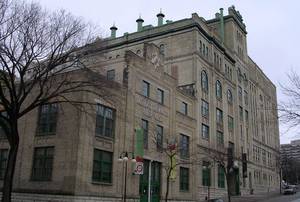It’s odd that a movie about two guys beating the hell out of each other would open during a season of peace and goodwill to men. Even stranger is that one fellow is a young heavyweight champ, and the other is a few years away from being eligible for Social Security. Yet this film is a mighty capstone to the vaunted “Rocky” series.
To be sure, “Rocky Balboa” has its flaws. Like an old car that needs extra time to warm up, it starts off slowly. Even at a modest length of 102 minutes, there are times when this PG-rated flick drags. At moments it waxes maudlin.
Sylvester Stallone, who wrote and directed this final outing, portrays an aging Rocky haunted by personal demons. For the past eleven years, he’s been mourning his deceased wife, Adrian, whose grave he visits each day. He owns a small restaurant which bears her name. Added to his woes is the fact that Rocky is estranged from his son Robert (Milo Ventimiglia), a workaholic financial wiz-kid toiling under an abusive boss.
Predictably, Stallone takes many shots at age. Perennial sidekick Paulie (Burt Young), delightfully grumpier than ever, has just been forced to retire from his job at the meatpacking plant which he calls “my life.” Rocky rediscovers Marie (Geraldine Hughes), a fortyish mother to whom he gave fatherly advice when she was her son’s age.
Things really get going when a computerized fight on ESPN shows Rocky in his prime beating the current champ, Mason “The Line” Dixon, played by Antonio Tarver, a real-life former world light heavyweight champion. Unlike the opponents in Rocky III-V, Dixon isn’t a villain. His character resembles that of Apollo Creed (Carl Weathers) in Rocky I-II, a decent man in need of a strong dose of humility. Rocky, of course, turns out to be just what the doctor ordered.
Dixon is an extremely unpopular champ who has never had a tough fight. After Rocky persuades a skeptical boxing commission to reinstate his license, Dixon’s promoters realize that an exhibition bout against the former champ would be a huge moneymaker and a rare opportunity for Mason to remake his image.
Everything quickly builds to the main event, which has the feel of Samson in the temple of the Philistines. Ridicule is in the air until Rocky finds a way to unload his legendary punching power against a much younger and faster opponent. As Robert observes in the penultimate round, “Nobody’s laughing now.” In fact, everybody is cheering. You will, too.
This film works because Stallone prepares the viewer for a leap of faith. “Rocky Balboa” returns to the roots of Rocky I, the hungry challenger with fists of iron and a heart of gold. Once again, Mr. Stallone makes us believe in the long shot. It’s a fitting ending to a series about a classic American icon, the underdog battling insurmountable odds, in this case, time itself.

